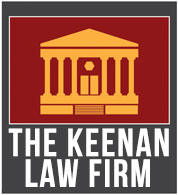In the realm of premises liability law, property owners have a fundamental responsibility to ensure the safety of individuals on their premises. This duty becomes particularly pertinent when it comes to warning signs – an essential tool to prevent accidents and potential lawsuits. In North Fulton County, Georgia, the Keenan Law Firm understands the gravity of premises liability cases and the critical role that warning signs play in mitigating risks. In this article, we delve into the significance of warning signs, their requirements, and the crucial role they play in premises liability cases.
Understanding Premises Liability
Premises liability refers to the legal obligation that property owners have to maintain a safe environment for individuals who enter their premises. This concept applies to both residential and commercial properties, including stores, offices, and public spaces. When a property owner fails to meet this obligation and someone sustains an injury as a result, the owner can be held liable for the damages.
The Role of Warning Signs
Warning signs are a vital component of premises liability cases. They serve as a means to inform visitors and patrons about potential hazards on the property, reducing the risk of accidents and injuries. These signs are not just a formality; they are a legal requirement in many situations. Properly placed and well-maintained warning signs communicate that the property owner is proactive about ensuring safety.
Legal Requirements for Warning Signs
In North Fulton County, Georgia, the law mandates the use of warning signs in various scenarios to minimize potential risks and protect visitors. These requirements are in place to ensure that property owners take all necessary precautions to prevent accidents. Common scenarios that necessitate warning signs include:
- Wet Floors: Property owners must place warning signs near wet or slippery areas, such as recently mopped floors, to alert individuals of the potential danger.
- Construction Zones: In areas undergoing construction or maintenance, warning signs must be present to notify people of potential hazards like uneven surfaces or falling debris.
- Uneven Surfaces: If there are uneven walkways, steps, or other surfaces, warning signs should be used to alert individuals and prevent tripping hazards.
- Hazardous Materials: Any area containing hazardous materials should be clearly marked with appropriate warning signs to prevent accidental exposure.
- Restricted Areas: Places that are off-limits to the public, such as maintenance rooms or employee-only sections, should be marked as restricted to prevent unauthorized access.
- Animal Presence: If there are animals on the premises, especially those that could pose a threat, warning signs should be used to caution visitors.
- Dangerous Equipment: Areas with potentially dangerous equipment or machinery should have warning signs to discourage untrained individuals from approaching.
The Impact on Premises Liability Cases
The presence or absence of warning signs can significantly influence the outcome of premises liability cases in North Fulton County. If an individual is injured on a property where proper warning signs were not in place, it suggests that the property owner was negligent in fulfilling their duty to ensure safety. On the other hand, if a property owner can demonstrate that they took reasonable measures to warn visitors about potential hazards, they may have a stronger defense against claims of negligence.
Ensuring Adequate Warning Signs
- Merely placing warning signs is not sufficient; they must meet specific criteria to be effective and legally compliant. The following factors contribute to ensuring the adequacy of warning signs:
- Visibility: Warning signs should be placed in locations where they are easily noticeable, even from a distance. Proper lighting and contrast can enhance their visibility.
- Clarity: The message conveyed by the sign should be clear and concise. Use universally recognizable symbols and language that is easily understood.
- Size and Format: The size of the sign should be appropriate for the area it is placed in. Information on the sign should be large enough to read without difficulty.
- Maintenance: Regular inspection and maintenance of warning signs are crucial. Faded, damaged, or illegible signs should be replaced promptly.
The Psychological Impact of Warning Sign
Beyond their legal implications, warning signs also have a significant psychological impact on individuals. They serve as a constant reminder of potential hazards and encourage people to exercise caution. The mere presence of warning signs can influence behavior, prompting visitors to be more attentive and aware of their surroundings. This increased vigilance can lead to a safer environment, preventing accidents before they occur.
Education and Awareness
Warning signs not only protect individuals but also contribute to a broader culture of safety and awareness. By consistently using warning signs, property owners contribute to educating the public about potential dangers in various environments. This educational aspect is particularly relevant in places frequented by children, the elderly, and individuals with disabilities who might be more vulnerable to accidents.
The Role of Liability Waivers
In some instances, property owners might require visitors to sign liability waivers, attempting to limit their responsibility in case of accidents. However, it’s important to note that such waivers might not always hold up in court, especially if negligence on the part of the property owner can be proven. Warning signs serve as a more proactive approach to preventing accidents and injuries, demonstrating a commitment to safety that can be more legally defensible than relying solely on waivers.
Beyond Compliance: Ethical Responsibility
While adhering to legal requirements is crucial, responsible property ownership goes beyond mere compliance. Property owners have an ethical responsibility to ensure the well-being of individuals who enter their premises. Utilizing warning signs appropriately showcases a genuine concern for visitors’ safety and reflects a commitment to creating a secure environment.
Collaboration with Legal Experts
Navigating the intricacies of premises liability and understanding the nuances of warning sign requirements can be complex. This is where the expertise of legal professionals becomes invaluable. If you’re a property owner in North Fulton County, Georgia, seeking to create a safe environment while also safeguarding your interests, consulting with legal experts can provide you with the guidance you need.
Legal professionals with experience in premises liability cases can offer comprehensive insights into the specific requirements for warning signs in various situations. They can help you ensure that your property is adequately equipped with the necessary signs, reducing the risk of accidents and potential legal liabilities.
Warning signs are not just a legal requirement; they are a fundamental tool for ensuring the safety of individuals on a property. In North Fulton County, Georgia, the Keenan Law Firm recognizes the paramount importance of warning signs in premises liability cases. Adequate warning signs can prevent accidents, protect property owners from liability claims, and ultimately create a safer environment for everyone.
If you’ve been involved in a premises liability incident or have questions about the role of warning signs, our experienced legal team is here to assist you. Contact the Keenan Law Firm today to ensure your rights are protected and to learn more about how we can help you navigate the complexities of premises liability law.
If you’re facing a premises liability issue or need legal guidance regarding warning signs, don’t hesitate to reach out to our dedicated team at the Keenan Law Firm. We are committed to advocating for your rights and ensuring your safety remains a priority. Contact us today for a consultation and let us help you navigate the legal landscape of North Fulton County, Georgia.

